

December 2023 NewsletterISSN: 1933-8651
In this issue we present the following articles, news, announcements, and reviews:
|
Articles, Essays, and Reports
News and Announcements
New Books
New Exhibits
Book Reviews
|
"If It Looks Like a Barn, Then It’s a Barn:"
Examining New Archaeological Research and
Interpretation of the Levi Jordan Plantation Quarters Community
By Kenneth L. Brown
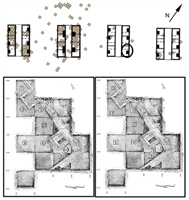
From 1986 through 2002, I directed historical archaeological research at the Levi Jordan Plantation in Brazoria County, Texas. Historical research and test excavations at the sugar mill have continued to the present. One of the results of this research was the purchase of approximately 90 acres of the original plantation by the Houston Endowment in 2002, and the transfer of the property from descendants of the Jordans to the State of Texas. The Texas Parks and Wildlife Department managed it for several years before the Texas Legislature shifted management to the Texas Historical Commission. Since 2002 the two state agencies contracted with several firms to add to our knowledge of the archaeology of the main house and the area around the Jordan Plantation Quarters.
From 2016 through 2018, Coastal Environments, Inc. (CEI) conducted excavations into a portion of one of the four cabin blocks previously defined as making up the Jordan Quarters Community. In 2022 this firm produced a report on this work entitled "Archaeological Investigations at the Levi Jordan Plantation (41BO165) State Historic Site, Brazoria County, Texas" by J. Ryan, D.G. Hunter, B. Haley, and D. B. Kelley. They stated: "A synthesis of all published archaeological data from previous investigations conducted at 41BO165, with that recovered in 2018, strongly suggests that the Block I-IV structures were not slave/tenant quarters but large, likely antebellum, livestock barns" (Ryan et al. 2022: iii). The CEI report led directly to this unfortunately long-delayed and overly short rebuttal.
[Read or download this full article here in Adobe .pdf format >>>].
[Return to table of contents]
Profiles in Practice: Maria Franklin
By Christopher Fennell

This newsletter feature on "profiles in practice" provides brief overviews of the recent activities of researchers and activists in African diaspora subjects. Please contact Chris Fennell (cfennell@illinois.edu) if you would like to contribute a profile for a future newsletter issue.
Dr. Maria Franklin is renowned within our field for her advocacy of a Black feminist perspective in scholarship and also for promoting greater diversity and inclusiveness in the profession. Her voice has been foundational on these subjects. Her arguments for the benefits of feminist perspectives, critical race theory, and greater diversity in the cultural backgrounds of researchers has been presented in persuasive, scholarly advocacy. Her early engagement with these efforts included two articles in 1997: "Why Are There So Few Black American Archaeologists?" in Antiquity journal 71: 799–801, and "Power to the People: Sociopolitics and the Archaeology of Black Americans," Historical Archaeology journal 31(3): 36–50. Numerous studies and related advocacy for improving our profession followed, including "A Black Feminist-Inspired Archaeology?" Journal of Social Archaeology 1(1): 108–125 (2001).
Her transformative impact has also been established in the ways in which her research agenda has facilitated the related research of her doctoral advisees. For example, her advisee Whitney Battle-Baptiste carried forward Franklin's Black feminist research agenda and is now a full professor of anthropology and the Director of the W. E. B. Du Bois Center at the University of Massachusetts, Amherst. A more recent doctoral advisee, Ayana Flewellen, similarly frames her work in a Black feminist approach and is now an assistant professor at Stanford University. Dr. Flewellen also collaborated in creating the Society of Black Archaeologists (SBA), a 501(c) non-profit professional society. In 2020, Franklin worked with Flewellen and several other scholars of African-American heritage to convene an online forum discussion on "Archaeology in the Time of Black Lives Matter," sponsored by SBA, Columbia University, and the Theoretical Archaeology Group. This excellent, insightful forum was moderated by Franklin and watched live by nearly 2,000 people across the world. This vital discussion is now available for further engagements with researchers world-wide as an online video-recording (https://www.societyofblackarchaeologists.com/). She and her colleagues then distilled these lessons into an article entitled "The Future of Archaeology Is Antiracist: Archaeology in the Time of Black Lives Matter," in American Antiquity 86(2): 224-243 (2021).
When Franklin published her articles in 1997 she estimated that there were only four people of African-American heritage holding doctorates and practicing archaeology in the United States. Since that time, her research and doctoral mentoring have launched the careers and research initiatives of several African Americans in archaeology. Recent assessments of the field count at least 25 individuals of African-American heritage who now hold doctorates and practice archaeology in the United States. Much of that progress is directly attributable to Franklin's trajectories of research and scholarly mentorship.
Franklin's commitment to advancing scholarship on the intersections of racism, class, and gender dynamics is evident in her article entitled "Gender, Clothing Fasteners, and Dress Practices in Houston's Freedmen's Town, ca. 1880-1904," Historical Archaeology 54: 556–580 (2020). This study addresses a notable gap in analyses of the ways in which African Americans navigated the class and racial currents of the nineteenth century. Clothing styles and shifting fashion trends can provide a means for communicating class aspirations and expressions of social respectability. Yet, these subjects have been notably understudied by historical archaeologists examining African-American experiences. Franklin employs an innovative method of analysis, examining a large collection of clothing fasteners from graves in a late nineteenth-century cemetery for African Americans in Houston. Her study reveals how class and racial dynamics in that time period constrained African Americans' abilities to afford more expensive clothing styles. Yet, Franklin's analysis of the evidence also shows how they invested in the fashions affordable to them which could convey their aspirations for class advancement and social respectability. Through a rigorous examination of multiple lines of evidence, she also provides future archaeological investigators with very valuable insights into likely distributions of artifacts in combination with categories of gender, racial heritage, and economic class.
Franklin's 2020 article, "Enslaved Household Variability and Plantation Life and Labor in Colonial Virginia," was published in the International Journal of Historical Archaeology 24: 115–155. In this study, she provides a vitally important service of scholarship in undertaking a synthetic and comparative analysis of multiple archaeological sites. She served as a lead investigator for two of the sites, called the Coke and Rich Neck plantations. Her comparative analysis with other plantation sites in Virginia explores the range of archaeological remains for households of enslaved African Americans in the 1700s and 1800s. Franklin advances a Black feminist perspective, providing highly insightful investigations of gender roles in the make-up of such households. Those dynamics intersected with elements of the scales of plantation operations and related labor tasks, leading to different degrees of "inter-household cooperation" in child supervision and completion of domestic and plantation work tasks. The Coke plantation context proved revealing in this comparative analysis, as the owner also operated a nearby tavern and imposed labor demands for that business as well. This article presents highly valuable insights along with a prodigious synthesis of studies of household dynamics, gender categories, age-group activities, and labor variability across plantation settings.
Franklin's prominence within our field is again evident in the fact that her evaluation of the state of the profession was included, as lead author with co-author Robert Paynter, as a chapter assessing "Inequality and Archaeology" in the peer-reviewed Voices in American Archaeology: The 75th Anniversary Volume of the Society for American Archaeology, edited by Wendy Ashmore, Dorothy Lippert, and Barbara Mills (2010, Society for American Archaeology Press). This state-of-the-art volume was designed by the editors and the Society for American Archaeology Press to include authors who have been transformative in the profession and who could therefore provide the highest value of evaluations of trends and progress within American archaeology.
Among other subjects in this 2010 chapter, Franklin's foundational contributions to Black feminist perspectives in archaeology are evident and inform an assessment of what has been accomplished in the field and of what challenges remained to be addressed. In the broader domain of social sciences and law, legal scholar Kimberlé Crenshaw is renowned for advancing critical race theories and important concepts of "intersectional" analysis of the combined dynamics of gender, class, and racial biases in society. Franklin serves in a direct, counterpart role in providing foundational influences within the field of archaeology.
The importance of generating high quality scholarship for broader audiences of local communities, descendant communities, and the public is highlighted in the article "Community Outreach, African American Descendants, and the Ransom and Sarah Williams Farmstead Project," published by Drs. Franklin and Nedra Lee in the Journal of Community Archaeology and Heritage 7(2): 135–148 (2020). This project entailed close collaborations with descendant community members and resulted in scholarship disseminated through studies produced for that stake-holder community, a public history exhibit in the University of Texas' highly acclaimed Texas Beyond History web portal, and exhibitions at an Austin museum and an international archaeology conference. The project also addressed a shortfall in existing studies of freedmen sites and communities in Texas. This article further provided a detailed template for other investigators to follow when working to establish a meaningfully collaborative engagement with descendant and local community members within the constraints of state-funded, cultural resource management initiatives.
Another recent article by Franklin and Lee on the Williams Farmstead Project continues a long and highly productive focus on foodways as providing significant evidence of cultural dynamics in African diaspora histories. "Revitalizing Tradition and Instigating Change" was published in the Journal of African Diaspora Archaeology and Heritage 8(3): 202–225 (2019). Franklin has done great service to the field by contributing significant studies of the ways in which culinary practices provide evidence of social change and cultural adaptations within enslaved and free African-American communities. Among these key publications, several represent "go-to" sources for African diaspora researchers, such as: "The Archaeological and Symbolic Dimensions of Soul Food: Race, Culture and Afro-Virginia Identity" in Race and the Archaeology of Identity, edited by Charles E. Orser, Jr. (2001, University of Utah Press); "Archaeobotanical Analysis and Interpretations of Enslaved Virginian Plant Use at Rich Neck Plantation," American Antiquity 73(4): 699–728 (2004, with Stephen Mrozowski and Leslie Hunt); and "Diaspora Foodways," in The Archaeology of Food: An Encyclopedia, edited by Karen Metheny and Mary Beaudry (2015, Rowman and Littlefield).
Her 2019 article with Lee continues this focus of obtaining insights through comparative studies. They demonstrate the ways in which African-American families in the late 1800s chose strategically to employ subsistence hunting and farming approaches to avoid the entanglements of debt-laden, tenant farming of cash crops. Those strategic choices are demonstrated through very careful investigation and analysis of the faunal and floral remains that represented their household foodways. As a hallmark of Franklin's scholarship, all of these studies include synthetic, comparative analysis of numerous archaeological sites and multiple lines of evidence.
Franklin recently embarked on a new line of scholarship focused on bioarchaeological studies of health and mortality among African-American populations in the 1800s and 1900s. In collaboration with Dr. Sam Wilson, she is undertaking a comparative and synthetic analysis of evidence from past investigations of cemetery interments to compile data on the health, disease, maladies, and trends in fatalities for these populations. The study includes a very robust collection of evidence, drawn from previous excavations of 1,500 interments across five cemeteries and four states. Their first study is entitled "A Bioarchaeological Study of African American Health and Mortality in the Post-Emancipation U.S. South," in American Antiquity 85(4): 652–675 (2020). This study addresses the ways in which structural racism, poverty, violence, and inadequate health care have severely impacted generations of African Americans. These are pressing issues today, with a Covid-19 pandemic continuing to impact African Americans with disproportionate severity due to the history and epidemiology of discrimination that Franklin and Wilson uncover in their research. Franklin's scholarship on past strategies in foodways and subsistence is equally relevant to challenges facing populations today. Many citizens now seek sustainable subsistence modes to avoid the nutritional deficiencies of commodified, processed foods and the unreliable vagaries of pricing and supply in today's market distribution systems.
Franklin has provided a transformative impact on the field through her trajectory of scholarship which advances a Black feminist perspective and has entailed excellence in research, publications, and scholarly mentorship.
[Return to table of contents]
Texas Historical Group Removes Slavery Books At Ex-Slave Plantations
By Sara Boboltz
Huffington Post, December 9, 2023
"The Texas Historical Commission has removed around two dozen race-related books from the gift shops of two former slave plantations because one person complained, according to Texas Monthly."
"The magazine reported this week that Michelle Haas, a white amateur historian, began emailing a commission board member after visiting the Varner-Hogg plantation last year."
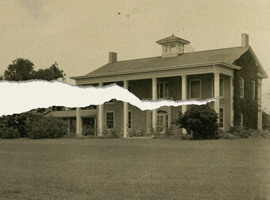
"Titles reportedly removed included: Remembering the Days of Sorrow, a book of slave narratives; Invisible Man, the Ralph Ellison novel on the Black experience; Stamped from the Beginning, a history of racist ideas by Ibram X. Kendi; and Roots, the Alex Haley novel famously adapted for television in the 1970s."
"The Texas Historical Commission is a state agency overseeing the preservation of certain historical sites across the state. As such, they were required to respond to an open records request from the Texas Monthly asking for emails relating to the gift shop situation."
"The magazine reported that Haas thought the Varner-Hogg plantation presented too much information about the enslaved Black people who worked the sugarcane fields and not enough about the white people who lived in the main house. She later reportedly emailed David Gravelle, a commission’s board member, a list of titles she did not like that were available at another nearby historical site, the Levi Jordan plantation."
[Read this full Huffington Post article online, as well as the Texas Monthly article >>>].
[Return to table of contents]
Oklahoma Restricted How Race Can Be Taught.
So These Black Teachers Stepped Up
By Adrian Florido
National Public Radio, November 12, 2023
"Tulsa, Okla. -- The schoolchildren arrived at the community center's cafeteria on a Saturday morning, their parents in tow. Some adults came without children, because they, too, wanted to learn the African American history that a new law has made many Oklahoma schoolteachers too afraid to teach."
"Kristi Williams, a leader and activist in Tulsa's Black community, led them in the pledge they recite each time they gather for a day of lessons."
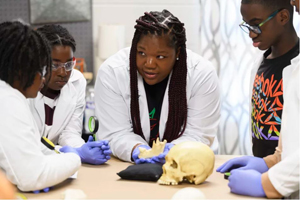
"'We will remember the humanity, glory and suffering of our ancestors,' they said in unison, 'and honor the struggle of our elders.'"
"Williams started offering these lessons early this year, after the state law -- adopted by Republican legislators in 2021 -- placed restrictions on how race and gender can be taught in Oklahoma's public schools."
"The law has had a chilling effect on teachers who now fear that touching on race and racism in their classrooms could cost them their jobs if a student or parent complains that a lesson made them uncomfortable."
"'They're just staying away from it and not teaching it,' Williams said. 'So I had to create a space for families to come in, and teach it.'"
"She called it Black History Saturdays. It's one local, grassroots initiative among numerous that have sprung up across the country in places where Republicans have adopted restrictions that make it harder for teachers to discuss race in classrooms."
[Read this full article online >>>].
[Return to table of contents]
Archaeology in the Community to Receive
the Society for Historical Archaeology's 2024
Daniel G. Roberts Award for Excellence in Public Historical Archaeology
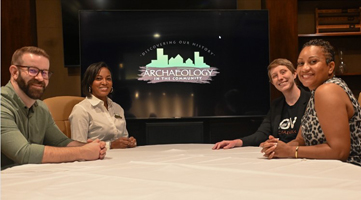
The Society for Historical Archaeology (SHA) announced that Archaeology in the Community has been selected to receive the Daniel G. Roberts Award for Excellence in Public Historical Archaeology at the SHA 2024 Conference in Oakland, California.
"Founded in 2009 by Dr. Alexandra Jones, Archaeology in the Community (AITC) promotes and facilitates the study and public understanding of archaeological heritage through hands-on learning, professional development, and community events. Since its founding, AITC has served thousands of students of all ages, customizing curricula to best suit the needs of the group and expanding into new media to ensure the public can engage with archaeology."
"Established in 2011 and first presented in 2012, the Daniel G. Roberts Award for Excellence in Public Historical Archaeology was created and endowed by the staff of John Milner Associates, Inc., to recognize and honor their colleague Daniel G. Roberts, one of the pioneers in public historical archaeology, particularly within a heritage management framework. Public archaeology entails a commitment to broad dissemination of the lessons learned from archaeology and the importance of preserving the archaeological record. The award recognizes outstanding, sustained accomplishments in public historical archaeology by individuals, educational institutions, for-profit or non-profit firms or organizations, museums, government agencies, and private sponsors."
[Return to table of contents]
Alicia Odewale to Receive the
Society for Historical Archaeology's 2024 John L. Cotter Award
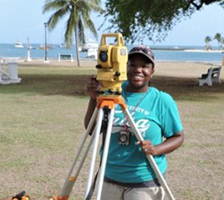
The Society for Historical Archaeology (SHA) announced that Alicia Odewale has been selected to receive the John L. Cotter Award at the SHA 2024 Conference in Oakland, California.
"Alicia is being recognized for her contributions to community-centered archaeology, anti-racism, and Black feminism through her work on the Estate Little Princess HBCU and Caribbean Field School on St. Croix; her involvement in the "Archaeology in the Time of Black Lives Matters" online forum; for the co-creation of "Mapping Historical Trauma in Tulsa," a restorative justice project that connects the Black community of Tulsa to Greenwood, the site of the Black Wall Street Massacre; and for multiple presentations, publications, exhibits, and education outreach completed in the first decade of her career."
"Established in 1998, this award is named in honor of John Lambert Cotter (1911-1999), a pioneer educator and advocate for the discipline. No more than one award is presented each year for outstanding achievement by an individual at the start of her career in historical archaeology."
[Return to table of contents]
2023 Frederick Douglass Book Prize Winners
News Release, November 14, 2023
New Haven, Connecticut -- Yale University’s Gilder Lehrman Center for the Study of Slavery, Resistance, and Abolition today has announced the finalists for the twenty-fifth annual Frederick Douglass Book Prize, one of the most coveted awards for the study of slavery. The 2023 Prize will be shared by two scholars. The co-winners are R. Isabela Morales for "Happy Dreams of Liberty: An American Family in Slavery and Freedom" (Oxford University Press) and Simon P. Newman for "Freedom Seekers: Escaping from Slavery in Restoration London" (University of London Press).
This annual prize, jointly sponsored by the Gilder Lehrman Institute of American History in New York City and the Gilder Lehrman Center for the Study of Slavery, Resistance, and Abolition (GLC) at the MacMillan Center at Yale University, recognizes the best book written in English on the topics of slavery, resistance, or abolition published in the preceding year. The $25,000 prize, shared by the two winners, will be presented to Morales and Newman at an award ceremony sponsored by the Gilder Lehrman Institute at Trinity Church in New York City on February 28, 2024.
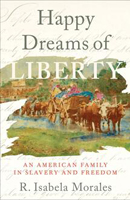 From a total of 78 submissions, the finalists were selected by a jury of scholars that included Kerry Ward (Chair), Associate Professor of History, Rice University; Trevor Burnard, Professor and Director of the Wilberforce Institute for the Study of Slavery and Emancipation, University of Hull; and Waldo E. Martin, Alexander F. & May T. Morrison Professor of American History & Citizenship, University of California, Berkeley.
From a total of 78 submissions, the finalists were selected by a jury of scholars that included Kerry Ward (Chair), Associate Professor of History, Rice University; Trevor Burnard, Professor and Director of the Wilberforce Institute for the Study of Slavery and Emancipation, University of Hull; and Waldo E. Martin, Alexander F. & May T. Morrison Professor of American History & Citizenship, University of California, Berkeley.
Gilder Lehrman Center director David W. Blight commended the two books for the "breadth and depth of their scholarship and sensitive treatment of human-centered struggles for emancipation." Jury chair Kerry Ward added that, in combination, the "compelling writing" of the winning books helps readers understand "the diversity of the experiences of slavery in different times and places," with people centered at the heart of these stories.
In addition to Morales and Newman, the third finalist for the 2023 Frederick Douglass Book Prize was David Silkenat for "Scars on the Land: An Environmental History of Slavery in the American South" (Oxford University Press). The jury and review committee praised the book as an outstanding addition to the historiography of slavery. Jury member Trevor Burnard observed that the book is "deeply researched and expertly written," and contributes "new dimensions to the history of antebellum slavery in the U.S. South" as well as pointing toward new directions of research.
In "Happy Dreams of Liberty," R. Isabela Morales presents a finely crafted narrative of families across generations, revealing shifting meanings of race and gender in the United States and the resiliency and challenges faced by Black families, enslaved and free. The book "brings together complex and contradictory elements in a very skilled way," Burnard observed. Morales’s book also paints fine-grained portraits of slaveholders in the antebellum U.S. South, emphasizing the ways that a "sense of absolute power went to their heads," noted Edward Rugemer, review committee member and Professor of History at Yale University.
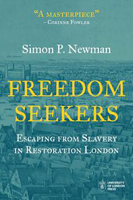 In "Freedom Seekers," Simon Newman challenges our preconceptions of racial slavery as a product of colonialism by showing us how embedded it was in Restoration London. Blight commented that Newman’s "brilliant use of newspaper ads," allows him to create moving stories about the lives and agency of enslaved African and South Asian people in the cosmopolitan, maritime world of seventeenth-century London. Gilder Lehrman Institute president James Basker added that Newman’s interdisciplinary approach provides an "outstanding model for research" for both college and high school students. Newman’s book "disrupts the narrative that England did not have a role in the ‘peculiar institution,’ " noted Julian Braxton of the Winsor School, another review committee member.
In "Freedom Seekers," Simon Newman challenges our preconceptions of racial slavery as a product of colonialism by showing us how embedded it was in Restoration London. Blight commented that Newman’s "brilliant use of newspaper ads," allows him to create moving stories about the lives and agency of enslaved African and South Asian people in the cosmopolitan, maritime world of seventeenth-century London. Gilder Lehrman Institute president James Basker added that Newman’s interdisciplinary approach provides an "outstanding model for research" for both college and high school students. Newman’s book "disrupts the narrative that England did not have a role in the ‘peculiar institution,’ " noted Julian Braxton of the Winsor School, another review committee member.
The Frederick Douglass Book Prize was established by the Gilder Lehrman Institute of American History and the Gilder Lehrman Center in 1999 to stimulate scholarship in the field by honoring outstanding accomplishments. The award is named for Frederick Douglass (1818–1895), who escaped bondage to emerge as one of the great American abolitionists, reformers, writers, and orators of the nineteenth century.
The mission of the Gilder Lehrman Center for the Study of Slavery, Resistance, and Abolition (GLC) is to support academic excellence in the study of slavery and its enduring legacies, make this knowledge freely available to the public, and foster work toward social justice. Launched in November 1998 through generous contributions from philanthropists Richard Gilder and Lewis Lehrman, the GLC is affiliated with the Whitney and Betty MacMillan Center for International and Area Studies at Yale University. The Center is committed to creating and disseminating knowledge about slavery and its legacies across all borders and all time, with free public programs open to scholars, students, and the general community. The GLC supports research fellowships, the Frederick Douglass Book Prize, scholarly working groups, international conferences, publications, and educational workshops for secondary school teachers and students, domestic and international.
[Return to table of contents]
African Diasporas and the Society for Historical Archaeology
2024 Conference on Historical and Underwater Archaeology
January 3-6, 2024, Oakland, California
Portals to the Past -- Gateways to the Future
SHA's annual conferences include many presentations of subjects concerning African diaspora archaeology.
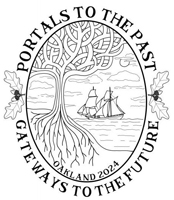 The conference's Plenary Session is entitled "The Approaching Storm: Book Banning, Curriculum Dilution, Whitewashing History, and Challenges to the Relevance of Archaeology." Description by the organizers: Perhaps the storm is already here. It is not an exaggeration to suggest that the country is experiencing political and social divisiveness not experienced in generations. While many of the issues are being resurrected from the past, and driven by special interests, what is new is the impact these agendas will have on historical archaeology and how the rhetoric has infiltrated academia. Can historical archaeology make any relevant contribution to the counternarrative? Whether it is the growing demand by a vocal minority that books addressing race, immigration, or gender are being challenged or banned as “harmful,” with librarians being criminalized, or historical facts of the past being rejected as offensive and rewritten in curriculums to satisfy political sensibilities, the potential damaging influence on archaeological research is far-reaching. The outcomes may not be limited to removal of books from the shelves, loss of funding opportunities, or ad hominem attacks on researchers engaged in important questions regarding our shared, sometimes uncomfortable history. The relevance of archaeology as an avenue of critical inquiry is being called into question. This plenary examines some of the issues impacting historical archaeology and the effects on research that the current highly polarizing climate is having, where alt-facts and the obscuring of historical knowledge in favor of feel-good narratives are being promoted from positions of power benefiting the few. Speakers: Ayana Omilade Flewellen, Alicia Odewale, Edward Gonzalez-Tennant, Mary Minkoff, Nathan Acebo, and Ora Marek-Martinez.
The conference's Plenary Session is entitled "The Approaching Storm: Book Banning, Curriculum Dilution, Whitewashing History, and Challenges to the Relevance of Archaeology." Description by the organizers: Perhaps the storm is already here. It is not an exaggeration to suggest that the country is experiencing political and social divisiveness not experienced in generations. While many of the issues are being resurrected from the past, and driven by special interests, what is new is the impact these agendas will have on historical archaeology and how the rhetoric has infiltrated academia. Can historical archaeology make any relevant contribution to the counternarrative? Whether it is the growing demand by a vocal minority that books addressing race, immigration, or gender are being challenged or banned as “harmful,” with librarians being criminalized, or historical facts of the past being rejected as offensive and rewritten in curriculums to satisfy political sensibilities, the potential damaging influence on archaeological research is far-reaching. The outcomes may not be limited to removal of books from the shelves, loss of funding opportunities, or ad hominem attacks on researchers engaged in important questions regarding our shared, sometimes uncomfortable history. The relevance of archaeology as an avenue of critical inquiry is being called into question. This plenary examines some of the issues impacting historical archaeology and the effects on research that the current highly polarizing climate is having, where alt-facts and the obscuring of historical knowledge in favor of feel-good narratives are being promoted from positions of power benefiting the few. Speakers: Ayana Omilade Flewellen, Alicia Odewale, Edward Gonzalez-Tennant, Mary Minkoff, Nathan Acebo, and Ora Marek-Martinez.
Roundtable lunch discussions include a session entitled "Funding Stories: Exploring Grants for Community-Driven Research," hosted by Alicia Odewale and Ayana Flewellen. Description by the organizers: In the shrinking landscape of grant opportunities for historical archaeology research projects, understanding where to find funding specifically designed to support storytelling and community-based research can be a challenge. In this roundtable, participants will have the opportunity to explore some of the research grants and education-based program offerings under the umbrella of the National Geographic Society and the Wenner-Gren Foundation. The intention of this interactive roundtable is to have an open discussion to demystify what is often a hidden process in grant writing: deciding which grant agency would be the best partner for your work. The hosts of this luncheon will share their experiences working with two grant organizations and how they have leveraged their relationship with each funding partner to expand research projects and student training opportunities, dive deeper into the world of archaeology as storytelling, and bring forth greater community impact from Tulsa’s Black Wall Street to sites of enslavement and freedom in the U.S. Virgin Islands.
[Return to table of contents]
New Book
Deep Inside the Blues: Photographs and Interviews
By Margo Cooper
University Press of Mississippi
384 pp., ISBN-13 978-1496847416, 2023.
Description from the Publisher:
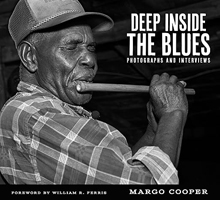 Deep Inside the Blues collects thirty-four of Margo Cooper’s interviews with blues artists and is illustrated with over 160 of her photographs, many published here for the first time. For thirty years, Cooper has been documenting the lives of blues musicians, their families and homes, neighborhoods, festivals, and gigs. Her photographic work combines iconic late-career images of many legendary figures including Bo Diddley, Honeyboy Edwards, B. B. King, Pinetop Perkins, and Hubert Sumlin with youthful shots of Cedric Burnside, Shemekia Copeland, and Sharde Thomas, themselves now in their thirties and forties. During this time, the Burnside and Turner families and other Mississippi artists such as T-Model Ford, James "Super Chikan" Johnson, and L. C. Ulmer entered the national and international spotlight, ensuring the powerful connection between authentic Delta, Hill Country, and Piney Woods blues musicians and their audience continues.
Deep Inside the Blues collects thirty-four of Margo Cooper’s interviews with blues artists and is illustrated with over 160 of her photographs, many published here for the first time. For thirty years, Cooper has been documenting the lives of blues musicians, their families and homes, neighborhoods, festivals, and gigs. Her photographic work combines iconic late-career images of many legendary figures including Bo Diddley, Honeyboy Edwards, B. B. King, Pinetop Perkins, and Hubert Sumlin with youthful shots of Cedric Burnside, Shemekia Copeland, and Sharde Thomas, themselves now in their thirties and forties. During this time, the Burnside and Turner families and other Mississippi artists such as T-Model Ford, James "Super Chikan" Johnson, and L. C. Ulmer entered the national and international spotlight, ensuring the powerful connection between authentic Delta, Hill Country, and Piney Woods blues musicians and their audience continues.
In 1993, Cooper began photographing in the clubs around New England, then in Chicago, and before long in Mississippi and Helena, Arkansas. On her very first trips to Mississippi in 1997 and 1998, Cooper had the good fortune to photograph Sam Carr, Frank Frost, Bobby Rush, and Otha Turner, among others. "The blues come out of the field," Ulmer told Cooper. Seeing those fields, as well as the old juke joints, country churches, and people’s homes, inspired her. She began recording interviews with the musicians, sometimes over a period of years, listening and asking questions as their narratives unfolded. Many of the key blues players of the period have already passed, making their stories and Cooper’s photographs of them all the more poignant and valuable.
[Return to table of contents]
New Book
The Words and Wares of David Drake:
Revisiting "I Made This Jar" and the Legacy of Edgefield Pottery
Edited by Jill Beute Koverman and Jane Przybysz
University of South Carolina Press
224 pp., ISBN-13 978-1643363202, 2023.
Description from the Publisher:
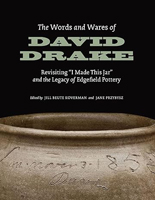 A celebration of the remarkable poem vessels of Dave the Potter.
A celebration of the remarkable poem vessels of Dave the Potter.
David Drake, also known as Dave the Potter, was born enslaved in Edgefield in the backcountry of South Carolina near the Savannah River. Despite laws prohibiting enslaved people from learning to read or write, David was literate and signed some of his pots. His practice was not only to add his name and a date but also to embellish his work with verse-a powerful statement of resistance.
The Words and Wares of David Drake collects multifaceted scholarship about David and his craft. Building on the 1998 national traveling exhibit catalog, I Made This Jar: The Life and Works of Enslaved African-American Potter, Dave, and featuring more than one hundred beautiful images and six new essays, this authoritative volume presents the diverse perspectives of scholars, artists, and collectors.
The Words and Wares of David Drake adds important depth and context to our understanding of both Edgefield pottery and the life of Dave.
David's work is now so highly prized it is the cornerstone of the Metropolitan Museum of Art's traveling exhibit of nineteenth-century ceramic art from Edgefield, now at the University of Michigan Museum of Art, Ann Arbor (August 26, 2023 to January 7, 2024) and then the High Museum of Art, Atlanta (February 16, 2024 to May 12, 2024).
[Return to table of contents]
New Book
African Musicians in the Atlantic World: Legacies of Sound and Slavery
By Mary Caton Lingold
University of Virginia Press
258 pp., ISBN-13 978-0813949789, 2023.
Description from the Publisher:
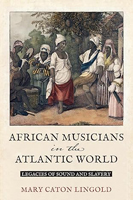 Music, that fundamental form of human expression, is one of the most powerful cultural continuities fostered by enslaved Africans and their descendants throughout the Americas. The roots of so much of the music beloved around the world today are drawn directly from the men and women carried across the Atlantic in chains, from the west coast of Africa to the shores of the so-called New World. This important new book bridges African diaspora studies, music studies, and transatlantic and colonial American literature to trace the lineage of African and African diasporic musical life in the early modern period.
Music, that fundamental form of human expression, is one of the most powerful cultural continuities fostered by enslaved Africans and their descendants throughout the Americas. The roots of so much of the music beloved around the world today are drawn directly from the men and women carried across the Atlantic in chains, from the west coast of Africa to the shores of the so-called New World. This important new book bridges African diaspora studies, music studies, and transatlantic and colonial American literature to trace the lineage of African and African diasporic musical life in the early modern period.
Mary Caton Lingold meticulously analyzes surviving sources, especially European travelogues, to recover the lives of African performers, the sounds they created, and the meaning their musical creations held in Africa and later for enslaved communities in the Caribbean and throughout the plantation Americas. The book provides a rich history of early African sound and a revelatory analysis of the many ways that music shaped enslavement and colonization in the Americas.
[Return to table of contents]
New Book
Insignificant Things: Amulets and the Art of Survival in the Early Black Atlantic
By Matthew Francis Rarey
Duke University Press
304 pp., ISBN-13 978-1478017158, 2023.
Description from the Publisher:
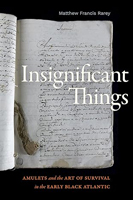 In Insignificant Things Matthew Francis Rarey traces the history of the African-associated amulets that enslaved and other marginalized people carried as tools of survival in the Black Atlantic world from the seventeenth to the nineteenth centuries. Often considered visually benign by white Europeans, these amulet pouches, commonly known as "mandingas," were used across Africa, Brazil, and Portugal and contained myriad objects, from herbs and Islamic prayers to shells and coins. Drawing on Arabic-language narratives from the West African Sahel, the archives of the Portuguese Inquisition, sixteenth- and seventeenth-century European travel and merchant accounts of the West African Coast, and early nineteenth-century Brazilian police records, Rarey shows how mandingas functioned as portable archives of their makers’ experiences of enslavement, displacement, and diaspora. He presents them as examples of the visual culture of enslavement and critical to conceptualizing Black Atlantic art history. Ultimately, Rarey looks to the archives of transatlantic slavery, which were meant to erase Black life, for objects like the mandingas that were created to protect it.
In Insignificant Things Matthew Francis Rarey traces the history of the African-associated amulets that enslaved and other marginalized people carried as tools of survival in the Black Atlantic world from the seventeenth to the nineteenth centuries. Often considered visually benign by white Europeans, these amulet pouches, commonly known as "mandingas," were used across Africa, Brazil, and Portugal and contained myriad objects, from herbs and Islamic prayers to shells and coins. Drawing on Arabic-language narratives from the West African Sahel, the archives of the Portuguese Inquisition, sixteenth- and seventeenth-century European travel and merchant accounts of the West African Coast, and early nineteenth-century Brazilian police records, Rarey shows how mandingas functioned as portable archives of their makers’ experiences of enslavement, displacement, and diaspora. He presents them as examples of the visual culture of enslavement and critical to conceptualizing Black Atlantic art history. Ultimately, Rarey looks to the archives of transatlantic slavery, which were meant to erase Black life, for objects like the mandingas that were created to protect it.
[Return to table of contents]
New Book
Africa and Its Diasporas
Edited by Vanicléia Silva Santos
UNESCO Press Online
1,065 pp., https://www.unesco.org, 2023.
Description from the Publisher:
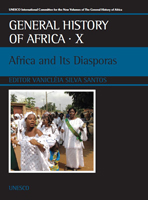 The "General History of Africa" (GHA) is a pioneering corpus, unparalleled in its ambition to cover the history of the entire African continent, since the appearance of human beings to contemporary challenges faced by Africans and their Diasporas in the world. It is a history that no longer leaves the pre-colonial period in the shadows and that deeply integrates the destiny of Africa into that of humanity by highlighting its relations with the other continents and the contribution of African cultures to the general progress of humanity.
The "General History of Africa" (GHA) is a pioneering corpus, unparalleled in its ambition to cover the history of the entire African continent, since the appearance of human beings to contemporary challenges faced by Africans and their Diasporas in the world. It is a history that no longer leaves the pre-colonial period in the shadows and that deeply integrates the destiny of Africa into that of humanity by highlighting its relations with the other continents and the contribution of African cultures to the general progress of humanity.
Africa and Its Diasporas, volume X in the GHA series, provides critical observation of the dynamics of the relationship between Africa and its diasporas, the movements between Africa and the rest of the world, and the ways in which Africa connects with the rest of the world. It places the innovative concept of global Africa at the centre of its perspective. Beyond the simple Atlantic framework, contributions are based on new epistemologies and historiographical practices, such as the study of biographies in order to understand, from the inside, the history of the diasporas.
The first section discusses the historical contexts in which the concept of race emerged in order to understand how Africans and Afro-descendants perceive and refer to themselves and others. The second section, a mapping of the African diaspora, examines three aspects based on the geography of the diaspora. Slavery in Africa, no matter where, has been marked by the struggle for freedom. This section also describes cultural identities and how they have been recreated in African diasporas and technological knowledge systems. The last section of the book addresses the walks of life and biographies of Africans. These biographies of men and women are certainly the most humanized and representative vision of the diaspora.
[Return to table of contents]
New Exhibit
One Life: Frederick Douglass
National Portrait Gallery, Washington, DC
June 16, 2023 to April 21, 2024
https://npg.si.edu/, 2023.
Description from the Museum:
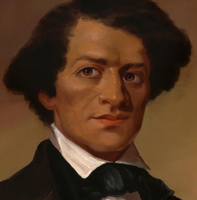 Frederick Douglass (1818-1895), the preeminent African American voice of the nineteenth century, is remembered as one of the nation’s greatest orators, writers, and picture makers. Born on the Eastern Shore of Maryland in 1818, Frederick Augustus Washington Bailey was the son of Harriet Bailey, an enslaved woman, and an unknown white father. He escaped bondage in 1838 and changed his surname to Douglass.
Frederick Douglass (1818-1895), the preeminent African American voice of the nineteenth century, is remembered as one of the nation’s greatest orators, writers, and picture makers. Born on the Eastern Shore of Maryland in 1818, Frederick Augustus Washington Bailey was the son of Harriet Bailey, an enslaved woman, and an unknown white father. He escaped bondage in 1838 and changed his surname to Douglass.
Over six decades, Douglass published three autobiographies, hundreds of essays, and a novella; delivered thousands of speeches; and edited the longest-running Black newspaper in the nineteenth century, The North Star (later Frederick Douglass’ Paper and Douglass’ Monthly). During the Civil War, he befriended and advised President Abraham Lincoln and met every subsequent president through Grover Cleveland. He was also the first African American to receive a federal appointment requiring Senate approval (U.S. Marshal of the District of Columbia).
Douglass became the most photographed American of the nineteenth century and remains a public face of the nation. As an art critic, he wrote extensively on portrait photography and understood its power. He explained how this "true art" (as opposed to pernicious caricatures) captured the essential humanity of each subject. True art was an engine of social change, he argued, and true artists were activists: "They see what ought to be by the reflection of what is, and endeavor to remove the contradiction."
Organized into seven sections, this exhibition highlights the long arc and significance of Frederick Douglass’s life: from slave and fugitive to internationally acclaimed abolitionist, women’s rights activist, and statesman after the Civil War. We come to recognize his influences in the Civil War and postwar eras; and the significance of his afterlife, in which his portraits and writings continue to inspire people to seek "all rights for all," one of his mottos. The range of objects shown here reflects Douglass’s openness to new forms of media and technology to advance the cause of human rights.
[Return to table of contents]
New Exhibit
From the Deep: In the Wake of Drexciya with Ayana V. Jackson
National Museum of African Art, Washington, DC
Ongoing museum and online exhibits
https://africa.si.edu, 2023
Description from the Museum:
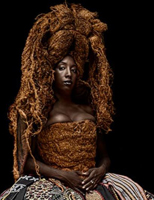 In the early 1990s, Drexciya, a Detroit-based techno duo made up of James Stinson and Gerald Donald, imagined an underwater kingdom populated by the children of pregnant women who had been thrown overboard or jumped voluntarily into the ocean during the transatlantic slave trade.
In the early 1990s, Drexciya, a Detroit-based techno duo made up of James Stinson and Gerald Donald, imagined an underwater kingdom populated by the children of pregnant women who had been thrown overboard or jumped voluntarily into the ocean during the transatlantic slave trade.
Drexciya’s founding myth has inspired numerous artists, among them Ayana V. Jackson who, in this exhibition, brings to life an immersive, feminist, and sacred aquatopia where African water spirits from Senegal to South Africa both midwife and protect the Drexciyans. Jackson asks that we reckon with the brutal history that cast these beings to the sea while simultaneously envisioning a world of powerful, resilient women. By using her own body to convey her message, Jackson actively engages in what it might have meant to be among the estimated two million captives who never made it to shore. What do you imagine the Drexciyans see looking back at us?
[Return to table of contents]
New Exhibit
Amoako Boafo: Soul of Black Folks
Denver Art Museum, Colorado
October 8, 2023 to February 19, 2024
https://www.denverartmuseum.org, 2023.
Description from the Museum:
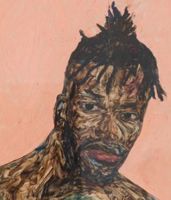 Amoako Boafo: Soul of Black Folks is the debut museum solo exhibition tour for Ghanaian artist Amoako Boafo (born 1984). One of the most acclaimed artists of his generation, Boafo’s works focus the viewers’ gaze on his subjects’ presence through his portraits representing Black life.
Amoako Boafo: Soul of Black Folks is the debut museum solo exhibition tour for Ghanaian artist Amoako Boafo (born 1984). One of the most acclaimed artists of his generation, Boafo’s works focus the viewers’ gaze on his subjects’ presence through his portraits representing Black life.
More than 30 works created between 2016 and 2022 are featured in Amoako Boafo, displaying Boafo’s vibrant use of color and thick gestures shaped by improvisational techniques such as finger-painting. His works actively center Black subjectivity, Black joy, and the Black gaze as the foundation of his inspiration and artistic practice.
The exhibition’s title was inspired by civil rights activist, sociologist, and Pan-Africanist W.E.B. Du Bois and his study, The Souls of Black Folk, published in 1903. Boafo grew up near the burial site of Du Bois in Accra, Ghana, and was affected by his research, especially his coining of the phrase "double consciousness," meaning the experience of Black people simultaneously having to look at themselves through their own and through white people’s points of view. Boafo’s artworks serve as an invitation to think about and challenge the "othered" perspective concerning Black people and the Black figure.
[Return to table of contents]
New Exhibit
Bahia Reverb: Artists and Place
California African American Museum, Los Angeles
September 16, 2023 to March 2, 2024
https://caamuseum.org, 2023.
Description from the Museum:
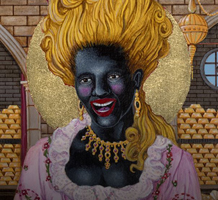 Artist residencies are an important tool for artists to explore site-oriented practices and experience firsthand particular places and cultures. Bahia Reverb: Artists and Place presents the work of ten former fellows at the Sacatar Institute in Bahia, Brazil, all from North America and of African descent, to reflect on how Bahia, an epicenter of the African diaspora, has fueled their work and changed their understanding of themselves.
Artist residencies are an important tool for artists to explore site-oriented practices and experience firsthand particular places and cultures. Bahia Reverb: Artists and Place presents the work of ten former fellows at the Sacatar Institute in Bahia, Brazil, all from North America and of African descent, to reflect on how Bahia, an epicenter of the African diaspora, has fueled their work and changed their understanding of themselves.
The artists are Sandra Brewster, Gerald Cyrus, Rik Freeman, Juan Erman Gonzalez, Mark Steven Greenfield, Karen Hampton, Germaine Ingram, Francis Tre Lawrence, Precious Lovell, and Tim Whiten.
This exhibition is curated by Bia Gayotto, independent curator, artist, and writer, and is co-presented by CAAM and Art + Practice as part of CAAM at A+P, a five-year collaboration.
[Return to table of contents]
Book Review
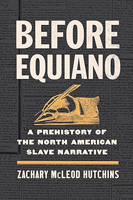
Zachary McLeod Hutchins. Before Equiano: A Prehistory of the North American Slave Narrative. Chapel Hill: University of North Carolina Press, 2022. 303 pp. (paper), ISBN 978-1-4696-7154-3.
H-Net Book Review, published by H-Early-America, https://networks.h-net.org/h-early-america (November, 2023).
Reviewed for H-Early-America by Aaron Fogleman (Northern Illinois University).
With this book Zachary McLeod Hutchins makes an important contribution to the growing scholarly interest in expanding our understanding of what a published "slave narrative" was by investigating the eighteenth-century origins of what is usually understood to be a nineteenth-century Anglo-American genre. In recent years scholars such as Gloria Garcia, Kathryn McKnight and Leo Garofalo, Sean Kelley, Paul Lovejoy, myself and Robert Hanserd, and others have explored Cuba, South America, West Africa, French Louisiana, and other places throughout the Atlantic world to find, publish, and analyze African voices, so that we may go well beyond the offerings of the familiar Anglo-American publications and heighten our understandings of African perspectives on transatlantic slavery throughout the Americas until emancipation and beyond. Hutchins traces the origins of nineteenth-century Anglo-American narratives in eighteenth-century newspapers (especially runaway ads), published works containing slave narratives, and documents related to individuals appearing in those two sources. With this he studies how the narrative style evolved, thereby reevaluating the slave narrative in relation to printing and demonstrating how the familiar approach to slave narratives overlooks developments in eighteenth-century slavery.
In his book, Hutchins argues three important points. First, eighteenth-century newspapers are filled with accounts about slavery and should be read as slave narratives. This is an intriguing point based largely on conjecture that stresses the perspective of audiences -- those who read British North American newspapers. It is worth noting that many other texts (some mentioned but not emphasized by Hutchins) really do describe events from the perspective of enslaved people themselves -- they contain the voices of enslaved African people, voices speaking about their lives in Africa, the Americas, and on the slave ships in between. Nevertheless, the perspective Hutchins offers via newspapers is valuable. Second, eighteenth-century readers imagined and reconstructed lively narratives about slavery from textual fragments in newspapers and other texts. This intriguing and certainly plausible point is also asserted but not demonstrated. Third, eighteenth-century slave narratives were associated with global politics, foreign relations, and war. This is the most important point, which Hutchins demonstrates quite well, and it is the most valuable contribution of the book.
Hutchins makes the case for his three points in five chapters. The first addresses Samuel Sewall and his well-known tract, The Selling of Joseph: A Memorial (1700), which Hutchins argues was hardly an abolitionist tract or even a harbinger thereof since Sewall traded in slaves before and after writing it. Instead, Sewall critiqued unlawful enslavement, a critique shaped by war and the politics of the transatlantic slave trade. Thus, Sewall's work fits a pattern increasingly stressed by scholars, namely that with rare exceptions antislavery writings before the Revolutionary era criticized not the immorality of slavery altogether but rather how slavery was practiced. Further, Hutchins writes that early eighteenth-century Boston newspaper ads about enslaved people involved in destructive fires linked their actions to the legitimacy of international political events, not the legitimacy of their enslavement. Hutchins postulates that readers developed attitudes about slavery, legitimacy, and foreign policy that contributed to what would later become the published slave narrative. This point was convincing, and I would add that this development happened in a world shaped by the international transatlantic slave trade and the politics and diplomacy thereof. It was a world of slavery before natural growth rates of enslaved people (as opposed to imports on slave ships) dominated North American slavery demographically and before revolutionary and Christian ideology and independence shaped the actions and reactions of enslaved people, free Blacks, and whites.
The second chapter addresses serial runaway ads in newspapers and speculates that audiences imagined the trajectory of the runaways' lives by following them in the serial ads. This, too, helped pave the way for future audiences who were learning how to read and understand the lives of people resisting slavery. An important part of the story of a man named Daniel (and by extension many others in similar situations) was shaped by his life and experiences in the maritime world, which were connected to international politics, and those politics influenced how readers judged Daniel and other individuals, as well as slavery itself. Hutchins's emphasis here is less on the lives of the individuals and their voices and more on how audiences read them. This aspect of the book is quite speculative, since the documentation favors the lives of individuals and the context that one might develop to better understand them.
The third chapter addresses the familiar cases of elite Africans, whom Europeans and colonials in the Americas considered to be "princes," who had been caught up in slavery. This included Ayuba Sulayman Diallo (Job ben Solomon), Ansa Sasraku (William Ansah Sessarakoo), and others described in contemporary publications. We know that these works were not connected to the abolition movement (which hardly existed at the time), but rather promoted criticism that people of high birth were treated so poorly. Hutchins clearly shows that in each case the circumstances of enslavement, release, and publication were related to British imperial-diplomatic interests -- developments readers fully understood. These enslaved individuals used diplomacy and diplomatic interest to leverage an improved position or freedom itself, and these works became what Hutchins calls a blueprint for anyone seeking emancipation. Quoting Herman Bennett, he writes "'your free-born Briton could feel for a prince, particularly a prince in distress.'"[1] In other words, the emphasis on diplomacy in the eighteenth century was a product of how the international transatlantic slave trade (not natural growth among enslaved populations in individual colonies and empires) dominated Atlantic slavery in during that time. This trend began waning in the late eighteenth century at the same time the nature of published slave narratives also began changing.
The fourth chapter investigates Briton Hammon and other enslaved people who chose sides during international conflict, and these developments shaped their published narratives. For Hammon and others, the published narrative reflected a perception of themselves as caught up in international politics, not a moral crusade against racial slavery, as was the case in nineteenth-century narratives. Hammon and others constructed narratives of their lives to intertwine with international diplomacy to gain public sympathy for their pursuit of freedom. Hammon's 1760 published narrative had this in mind, which explains the inconsistencies and inaccuracies of some of its details.
In chapter 5 Hutchins addresses two themes with varied success. In the first, he shows how an enslaved man named Caesar and the well-known Phillis Wheatley Peters appropriated revolutionary ideology during the Imperial Crisis to attack slavery. He then goes on to investigate a debate between Hector St. John de Crèvecoeur and John Dickinson concerning the impact of new British policy and whether it "enslaved" Americans, as Dickinson claimed. Hutchins views the interactions of these two as a debate over the racialization of slavery. He believes their debate contributed to a later style of slave narrative that attacked arbitrary abuses by those in power over others. Hutchins asserts that the "War of American independence established slavery as a product of racialization, not war," after which race-based slave narratives followed (p. 189). Hutchins notes that after the Revolution established the racialization of slavery, writers no longer used the slavery metaphor to describe abusive power. This may have been true, but one should also consider that the reason Dickinson and others stopped using the metaphor was that they associated it with the BritBritish, whom they had gotten rid by then via independence, so they no longer needed the metaphor. Although it may have lingered in other corners, the use of this metaphor in national political debate and crisis came and went with the Revolutionary era. The meaning of the debate between Crèvecoeur and Dickinson is a bit murky. It would have been helpful if Hutchins had mentioned that Crèvecoeur (a French noble) supported the American cause, emigrated to the United States, and wrote sympathetically about Americans. Yet he was also somewhat critical of them, not unlike two other French nobles of the day -- Lafayette (who criticized American slavery) and Tocqueville (who wrote about America after the French Revolution). Hutchins makes it clear that Crèvecoeur attacked Dickinson for his use of the slavery metaphor, but the link from Crèvecoeur to the nineteenth-century slave narrative is not clear. Further, while there is an argument to made for racialization in this era, it is not entirely clear how this debate contributed to it.
Hutchins's final chapter or conclusion effectively stresses how change after the 1808 slave trade ban removed the international, diplomatic component to American slavery. Thus, the slave narrative shifted to domestic issues (including the growth of slavery due to natural increase), and with that race became a more prominent factor. Hutchins argues that Olaudah Equiano's published work was the end of the old-style narrative with its diplomatic, international emphasis and not the beginning of something new. This is based on his view that later narratives by Africans like Boyereau Brinch (Jeffrey Brace) and Broteer (Venture Smith) focused on the domestic agenda, not international issues. In other words, to Hutchins, Equiano's work was closer to that of Diallo and Sessaraku than that of Frederick Douglass or Harriet Jacobs. I disagree. The vast majority of Brinch's 1810 published account (twenty-one years after Vassa's) is about international events -- life and warfare in West Africa, the transatlantic slave trade via the Caribbean to New England, and the Revolutionary War, which became an international conflict that Brinch describes in detail from the perspective of an African fighting in it. And while the bulk of Broteer's 1798 account describes his life in New England, its initial chapters are significantly international in character, describing the loss of freedom in his West African homeland followed by transport to the Caribbean and finally to New England. The point is that the transatlantic slave trade shaped the international character of the narratives -- a major point that Hutchins himself promotes -- and as long as that trade continued, so too did the international character of the published narratives. The published account of Vassa (as Equiano preferred to be called) marked not the end of an era or turning point but rather was part of a transition era in the publication of African voices, since Vassa rigorously promoted abolitionism, yet presented a tale heavily shaped by international events, as did Quobna Ottabah Cugoano (John Stuart) in his influential 1787 account (two years prior to that of Vassa).[2] On the other hand, Hutchins's point that newspapers remained important in the nineteenth century, but in a different way, is well taken. Further, he believes that the desire for citizenship and associated rights shaped later slave narratives and African American literature. This too is a good point and speaks to the importance of independence and the American Revolution in shaping these developments.
It was not a coincidence that published accounts began to emphasize the desire for citizenship and associated rights in the late eighteenth and early nineteenth centuries: enslaved people were telling their stories during changing times. Hutchins does not emphasize this point, but the American Revolution unleashed an ideology that many Africans and African Americans appropriated to attack slavery, usually stressing the irony or problem that they remained enslaved in a new country supposedly based on freedom. Further, in addition to offering new ideologies, the Revolution set into motion the forces that finally banned the transatlantic slave trade in 1808, after which the vast increase in slavery resulted from the natural increase of the enslaved population. Thus, the basis of what shaped the earlier narratives described by Hutchins -- the transatlantic slave trade and its accompanying politics -- disappeared. This happened in a newly independent and expanding country defined largely by westward conquest and enslavement of people born there.
Hutchins has traced an important literary development regarding slave narratives at this time by seeking the origins of a specific Anglo-American genre, yet it is worth noting that what he describes was part of something happening throughout the Atlantic world in many languages. Hutchins appropriately takes an expanded view of where to look for printed material involving the lives of Africans, yet there was much, much more happening in the same era -- in Spanish, German, and other languages in published works from Brazil to North America to Europe. We would all to do well to pay more attention to African voices (and with that, their narratives) and interpret the well-known Anglo-American genre within a larger context. In other words, what Hutchins describes was part of a much larger (forgotten) story that began even before the eighteenth century and developed throughout the Atlantic world.
Notes
[1]. From Herman L. Bennett, African Kings and Black Slaves: Sovereignty and Dispossession in the Early Modern Atlantic (Philadelphia: University of Pennsylvania Press, 2018), 103.
[2]. Quobna Ottabah Cugoano (John Stuart), Thoughts and Sentiments on the Evil and Wicked Traffic of the Slavery and Commerce of the Human Species... (London: 1787).
[Citation: Aaron Fogleman. Review of Hutchins, Zachary McLeod, Before Equiano: A Prehistory of the North American Slave Narrative. H-Early-America, H-Net Reviews. November, 2023. This work is licensed under a Creative Commons Attribution-Noncommercial-No Derivative Works 3.0 United States License. H-Net permits the redistribution and reprinting of this work for nonprofit, educational purposes.]
[Return to table of contents]
Book Review
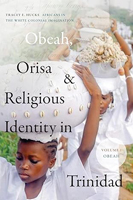
Tracey E. Hucks. Obeah, Orisa, and Religious Identity in Trinidad, Vol. 1, Obeah: Africans in the White Colonial Imagination. Religious Cultures of African and African Diaspora People Series. Durham: Duke University Press, 2022. 280 pp. (paper), ISBN 978-1-4780-1485-0.
H-Net Book Review, published by H-Africa, https://networks.h-net.org/h-africa (October, 2023).
Reviewed for H-Africa by John K. Thornton (Boston University).
Tracey E. Hucks's new study is part of a larger work that she shares with Dianne M. Stewart, who has written the a second volume of Obeah, Orisa, and Religious Identity in Trinidad (Orisa: Africana Nations and the Power of Black Sacred Imagination [2022]). Following an illustrious thread of earlier scholarship of the same vein, such as Diana Paton's comprehensive statement of how British law was deployed against Obeah in Jamaica (The Cultural Politics of Obeah: Religion, Colonialism, and Modernity in the Caribbean World [2015]), Hucks's book focuses, for the most part, on how colonial authorities repressed Obeah in Trinidad.
Trinidad, as Hucks quickly reveals, was not a typical English colonial setting. The colony began as a long-standing, albeit neglected, Spanish holding that had existed for many years as a backwater. Spain decided, in the heat of the competition of the revolutionary years of the late eighteenth century, to attempt to jump-start a sugar industry by offering a royal cedula, which inspired colonists to come from other parts of the Caribbean and bring their capital with them. Lacking some of the English prejudices against free people and religious preferences, the Spanish encouraged slave owners to relocate to the island, with remarkable success.
Perhaps the first and most notable issue to emerge was the provision that free people of color were welcome, and the British soon attracted free colonists from Grenada and other Catholic countries (and especially Saint-Domingue) as the British or the Haitian revolution forced them to leave their homes. In the midst of this, Trinidad came into English hands in 1796 (but only formally in 1802), creating a larger problem, an ethnic situation that strained the British government's sense of danger as the English were suddenly beset with an incredibly diverse population. Initially, this population included French-speaking Catholics, some of whom were white and some of whom former slaves. African American soldiers arrived, followed not long afterward by the first of several indentured servant groups, initially Chinese, then Indian, then yet another group of Africans, this time from Sierra Leone, where the re-captives from the suppression of the slave trade landed.
Obeah came along with this mix of people, or rather, one might say, an African-based religious system that the authorities lumped into the single category of Obeah. Obeah, in turn, had been the bugbear of Jamaica's history, even since Tacky's rebellion of 1760 had an Obeah man among its leadership, and Jamaica led thinking in all British colonies. Hucks focuses on Governor Thomas Picton, a stern and cruel administrator who devised gruesome punishments for practicing Obeah and concluded that a great many apparently unrelated practices qualified for punishment. His reign of terror was so demanding that even the planter class thought it overly disruptive.
Although there were European precedents for demonizing and then destroying religious practices that were outside of Christianity in Europe and over a long period, Hucks sees the suppression of Obeah on a much larger canvas. Drawing on Vincent Brown's and Paton's work, among others, Hucks points out that the use of torture and physical punishment was not simply a religious prejudice but part of a larger plan of complete domination (The Reaper's Garden: Death and Power in the World of Atlantic Slavery [2008]). The problem was made more difficult because European-style medicine was limited in Trinidad, and, as a result, African curing systems, of which Obeah was a part, became the basis for addressing many medical problems. In spite of the raft of patent medicine cures available to the public from non-Africans, Hucks notes, only cures among the African descended were persecuted.
While Obeah trials and punishments dropped off following the end of slavery, the assault on African-related religious activity continued, as is seen in how various public performances were viewed and policed in the later nineteenth century. Carnival dancing, Canboulay (a seasonal celebration), and Bongo (a burial custom) were attacked mostly because they were considered vulgar and indecent, rather than because they were a threat to public order or a challenge to government.
Hucks devotes a considerable amount of space to discussions of the role of the liberated Africans' arrival, bringing with them Yoruba and Rara (Dahomean) religion. In particular, Hucks focuses on the trials of John Cooper and Mah Nanny (his brother). She hones in on the details of the trial records of several prominent practitioners whose testimony is both unique and detailed. She notes the difficulties African-born defendants faced in giving testimony and in understanding legal issues. The treatment of Cooper's case (he was ultimately exonerated) is an example of the remarkable set of double standards and unfair and marginally legal practices used in Obeah cases. It was clear that the attitudes toward Obeah were more based on prejudice and the long-standing ban of Obeah as a religious or therapeutic practice than a proper application of the law.
This work might have been strengthened had Hucks also chosen to examine, for comparison, the religious practices of the Indian workers who came into the colony practicing Hinduism and Islam (with related "magical" practices as well). Did they also find these religious systems under legal fire? If not, why?
Hucks's book is thoroughly researched with a wide range of primary sources. It deals far more with the colonial suppression of Obeah than with Obeah itself as a body of religious lore. But in all fairness, the British courts, unlike those of Iberian America, did not concern themselves very much with practice, and so evidence is as lacking in this case as it is available in Brazil where Africans of the same roots were continuing to arrive during this same period. It will be interesting to see how Stewart deals with these issues on Orisa worship that are found well documented in Cuba and Brazil in the second volume of the series.
[Citation: John K. Thornton. Review of Hucks, Tracey E, Obeah, Orisa, and Religious Identity in Trinidad, Vol. 1, Obeah: Africans in the White Colonial Imagination. H-Africa, H-Net Reviews. October, 2023. This work is licensed under a Creative Commons Attribution-Noncommercial-No Derivative Works 3.0 United States License. H-Net permits the redistribution and reprinting of this work for nonprofit, educational purposes.]
[Return to table of contents]
Book Review
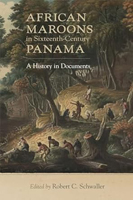
Robert C. Schwaller, ed. African Maroons in Sixteenth-Century Panama: A History in Documents. Norman: University of Oklahoma Press, 2021. 302 pp. (paper), ISBN 978-0-8061-6933-0.
H-Net Book Review, published by H-Caribbean, https://networks.h-net.org/h-caribbean (October, 2023).
Reviewed for H-Caribbean by Michael Becker (College of William & Mary).
Between the 1520s and 1580s, fugitive enslaved Africans formed extensive maroon communities in the interior of the Panamanian isthmus. While not strictly the first African maroon communities in the Americas, the size, longevity, and resilience of these communities do make them an unusually well-documented sixteenth-century episode of Black resistance. Robert C. Schwaller's African Maroons in Sixteenth-Century Panama: A History in Documents presents an extensive collection of primary source documents about these communities, with a thoughtful critical introduction and a strong critical apparatus. Schwaller's labors have created a readable and accessible resource on an understudied and important aspect of early colonial Latin American history.
Schwaller begins the book with a scholarly introduction that situates the formation of early maroon communities in the context of early Spanish colonialism and the attendant decimation of indigenous communities. He further describes how the early influx of enslaved African laborers led to early slave flight and the growth of maroon communities. This is counterposed to the development of strategies of domination, control, and policing implemented by individual enslavers and colonial authorities, drawing from but innovating upon techniques used to police indigenous communities. Schwaller additionally provides useful meditations on multiple strategies of reading and interpretation, suitable to guide readers through the challenges of the selected texts.
Following the introduction, the book is divided into five roughly chronological parts. Part 1, "Early Maroons through the First Bayano War (1530s-1550s)," presents accounts of the first groups of maroons in colonial Panama. This section also discusses the First Bayano War, the armed conflict in which Spanish forces attacked and dispersed King Bayano's community. Part 2, "Maroon Resurgence (1560s-1570s)," describes the revivification of maroon communities and the renewed challenge they began to present to Spanish colonial trade routes. The third part, "The Second Bayano War: Maroons and the English (1572-1578)," focuses on the alliance forged between maroons and Spain's traditional enemy, the English, chiefly through expeditions led by Sir Francis Drake and John Oxenham. Part 4, "The Second Bayano War: Tenuous Negotiations (1579-1582)," shifts attention to freighted and extended negotiations between the Spanish colonial authorities and maroon leaders, which eventually led to the concession of liberty to the maroons and the establishment of the first colonially recognized free Black communities in the Americas. The final part, "Spanish-Maroon Peace and its Aftermath," presents documents formally establishing peace between maroons and Spanish colonists and accounting for the final holdouts in the Second Bayano War. A brief epilogue discusses the history of the two free Black communities created by the peace and the continued presence of fugitive enslaved people in Panama through the seventeenth century.
The majority of sources presented in the book come from Spanish officials, including royal edicts, reports, and official correspondence. Schwaller takes judicious steps to excerpt these documents, removing some of the formulaic language and ample repetition that characterizes some of the originals. These documents present a partial view of maroons, leavened by xenophobic and racist tropes. Schwaller provides thoughtful guidance to readers on how to interpret these texts and their lacuna. Reading along the grain, he argues, allows readers to "understand the motivations that influenced Spanish choices" and "reveals how Spanish perceptions of Africans, prejudiced as they were, informed decisions and actions" (pp. 23-24). This strategy should be coupled, he continues, with reading against the grain. Using additional primary and secondary sources that provide greater context, readers can attempt to access maroon perspectives of events. For example, this context could inform readers that Spanish descriptions of maroons "jumping" and "leaping" during battles reflect African martial techniques (pp. 24-25). Through thoughtful, detailed introductions and extensive contextual footnotes, Schwaller makes this second reading technique more accessible to lay readers. In presenting excerpts from Franciscan friar Pedro de Aguado's narrative of the war against King Bayano, for example, Schwaller usefully footnotes a discussion of an unusual, maroon-led mass with a discussion of early modern African Christianity (pp. 72-75). This critical apparatus demonstrates not only a strong command of early colonial Latin American history but also early modern Spanish and African history.
While there is a developed Spanish-language scholarship on Panama's maroons, far less has been written on this topic in English. Schwaller's reader makes this history and many key documents accessible to English readers in a new way. While he engages with the Spanish language historiography briefly in the introduction and in footnotes, a fuller account of this ongoing conversation would have been a beneficial orientation to those unable to read it in the original language. Seeing the insights Schwaller brings to the introduction and annotation of the selected documents, readers will also look forward with anticipation to his own monograph on the topic. Nonetheless, on its own, the book will surely enrich comparative approaches across the study of slavery and African diaspora communities in the early modern Americas. In whole or part, the book also promises to be a great teaching tool for upper-level undergraduate and graduate courses, through presenting intriguing primary source documents apt for critical interpretation and analysis.
[Citation: Michael Becker. Review of Schwaller, Robert C., ed., African Maroons in Sixteenth-Century Panama: A History in Documents. H-Caribbean, H-Net Reviews. October, 2023. This work is licensed under a Creative Commons Attribution-Noncommercial-No Derivative Works 3.0 United States License. H-Net permits the redistribution and reprinting of this work for nonprofit, educational purposes.]
[Return to table of contents]

©2023 African Diaspora Archaeology Network
Copyright and all rights reserved by
individual authors for each article.
Please send comments, suggestions,
or questions to the editor
Last updated: December 14, 2023
Text only menuSearch
|



